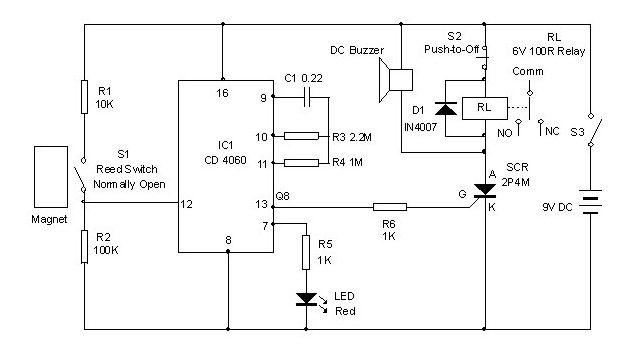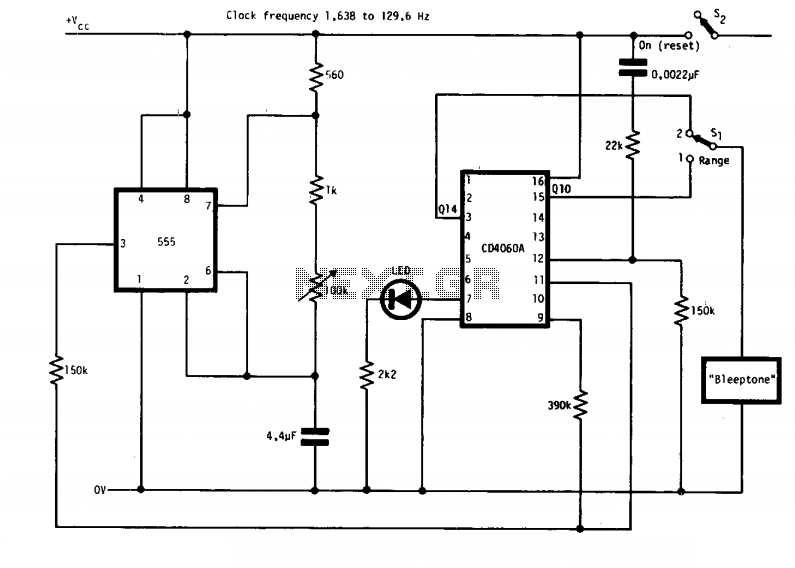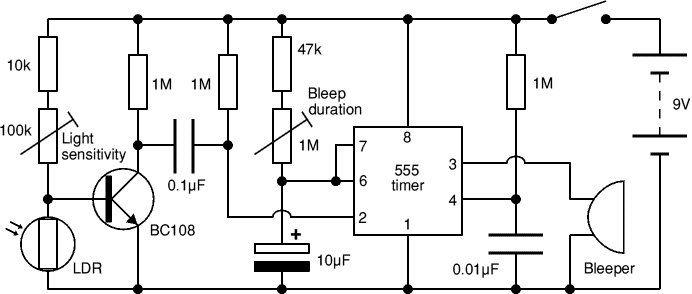
Multitone Siren Alarm

This document presents a simple schematic of a multitone siren alarm circuit. The multitone siren is effective for reverse horns, burglar alarms, and various other applications. It generates five distinct audio tones, making it significantly more attention-grabbing than a single-tone siren.
The multitone siren alarm circuit utilizes a combination of oscillators and a sound-generating device, typically a piezoelectric speaker or a small loudspeaker, to produce multiple tones. The circuit may include a microcontroller or a dedicated tone generator IC, which is programmed or configured to cycle through the five different frequencies. These frequencies are carefully chosen to ensure that they are distinct enough to be easily recognized by the human ear.
The circuit design typically features a power supply section, providing the necessary voltage and current to operate the components. A resistor-capacitor (RC) network may be employed to shape the oscillation frequencies, while a transistor or MOSFET may be used to drive the speaker, allowing for sufficient output power without distortion.
In applications such as burglar alarms, the multitone siren can be programmed to activate under specific conditions, enhancing the alertness of nearby individuals. The use of multiple tones can also be beneficial in environments where a single tone may blend into the background noise, making the alarm less effective.
Overall, the multitone siren alarm circuit is a versatile solution for various signaling applications, providing an effective means of alerting individuals to potential threats or emergencies through its distinctive audio output.Here the simple schematic of multitone siren alarm circuit. This multitone siren is effective for reverse horns, burlgar alarms, and many others. It generates five various audio tones and is much more earcatching than a single-tone siren. T.. 🔗 External reference
The multitone siren alarm circuit utilizes a combination of oscillators and a sound-generating device, typically a piezoelectric speaker or a small loudspeaker, to produce multiple tones. The circuit may include a microcontroller or a dedicated tone generator IC, which is programmed or configured to cycle through the five different frequencies. These frequencies are carefully chosen to ensure that they are distinct enough to be easily recognized by the human ear.
The circuit design typically features a power supply section, providing the necessary voltage and current to operate the components. A resistor-capacitor (RC) network may be employed to shape the oscillation frequencies, while a transistor or MOSFET may be used to drive the speaker, allowing for sufficient output power without distortion.
In applications such as burglar alarms, the multitone siren can be programmed to activate under specific conditions, enhancing the alertness of nearby individuals. The use of multiple tones can also be beneficial in environments where a single tone may blend into the background noise, making the alarm less effective.
Overall, the multitone siren alarm circuit is a versatile solution for various signaling applications, providing an effective means of alerting individuals to potential threats or emergencies through its distinctive audio output.Here the simple schematic of multitone siren alarm circuit. This multitone siren is effective for reverse horns, burlgar alarms, and many others. It generates five various audio tones and is much more earcatching than a single-tone siren. T.. 🔗 External reference





